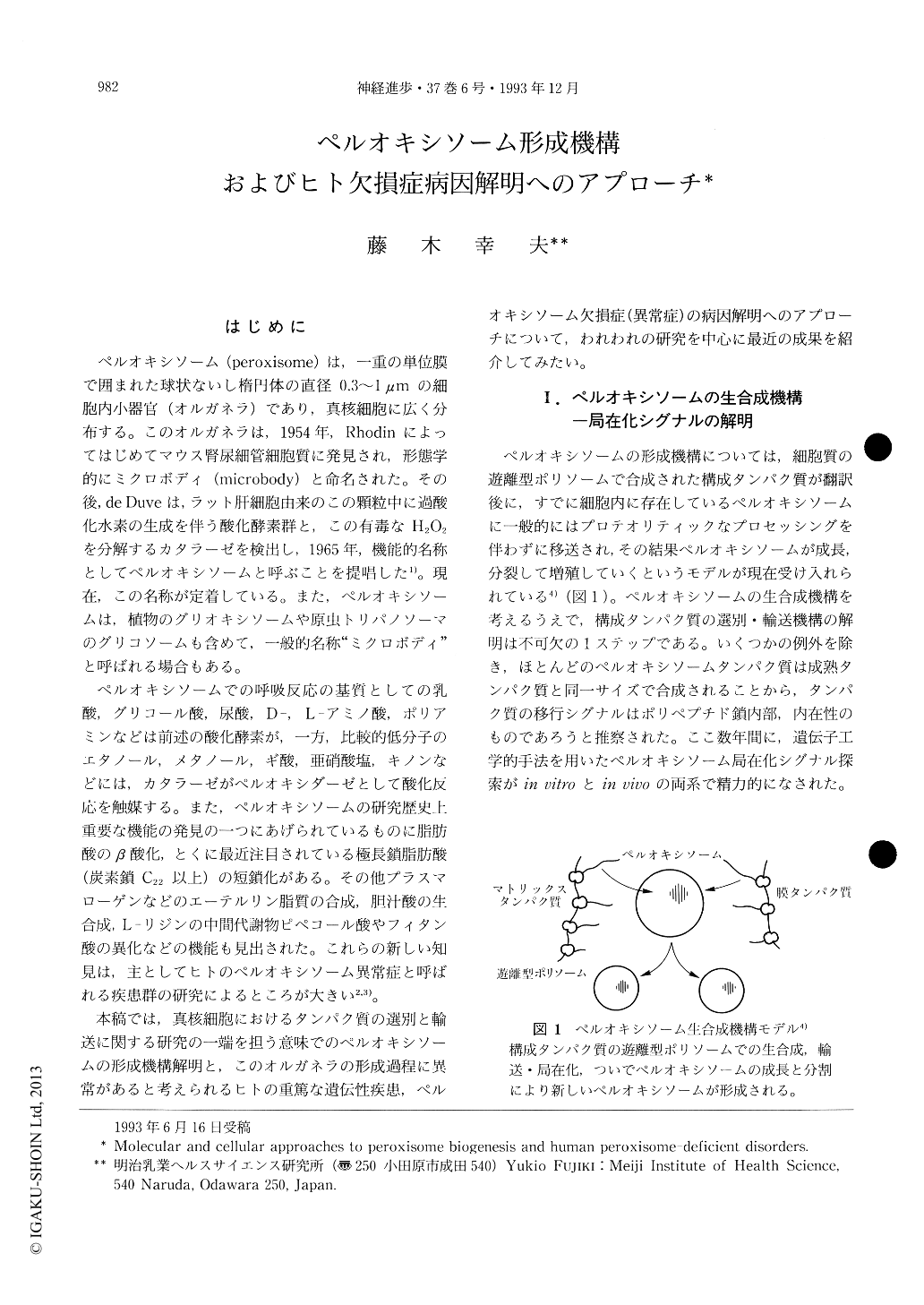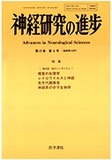Japanese
English
- 有料閲覧
- Abstract 文献概要
- 1ページ目 Look Inside
はじめに
ペルオキシソーム(peroxisome)は,一重の単位膜で囲まれた球状ないし楕円体の直径0.3~1μmの細胞内小器官(オルガネラ)であり,真核細胞に広く分布する。このオルガネラは,1954年,Rhodinによってはじめてマウス腎尿細管細胞質に発見され,形態学的にミクロボディ(microbody)と命名された。その後,de Duveは,ラット肝細胞由来のこの顆粒中に過酸化水素の生成を伴う酸化酵素群と,この有毒なH2O2を分解するカタラーゼを検出し,1965年,機能的名称としてペルオキシソームと呼ぶことを提唱した1)。現在,この名称が定着している。また,ペルオキシソームは,植物のグリオキシソームや原虫トリパノソーマのグリコソームも含めて,一般的名称“ミクロボディ”と呼ばれる場合もある。
ペルオキシソームでの呼吸反応の基質としての乳酸,グリコール酸,尿酸,D-,L-アミノ酸,ポリアミンなどは前述の酸化酵素が,一方,比較的低分子のエタノール,メタノール,ギ酸,亜硝酸塩,キノンなどには,カタラーゼがペルオキシダーゼとして酸化反応を触媒する。また,ペルオキシソームの研究歴史上重要な機能の発見の一つにあげられているものに脂肪酸のβ酸化,とくに最近注目されている極長鎖脂肪酸(炭素鎖C22以上)の短鎖化がある。その他プラスマローゲンなどのエーテルリン脂質の合成,胆汁酸の生合成,L-リジンの中間代謝物ピペコール酸やフィタン酸の異化などの機能も見出された。これらの新しい知見は,主としてヒトのペルオキシソーム異常症と呼ばれる疾患群の研究によるところが大きい2,3)。
Peroxisome is a model organelle to investigate the mechanism of protein translocation and organelle assembly. Topogenic signals specific for peroxisomal protein transport have been studied both in vivo and in vitro. One type of the targeting signals is the -Ser-Lys-Leu-COOH (SKL) motif located at the C-termini of a dozen of peroxisomal enzymes and another is the N-terminal extension peptides of 3-ketoacyl-CoA thiolase. Human autosomal recessive peroxisomal disorders are of clinical consequence as well as a model system to study the biogenesis and physiological significance of peroxisomes. In patients with generalized peroxisomal disease such as cerebrohepatorenal Zellweger syndrome where peroxisomes are morphologically absent, all peroxisomal proteins appear to be normally synthesized but assembly of peroxisomes is impaired. Thus far, nine complementation groups have been reported for these peroxisome-defective disorders. We have isolated several somatic animal cell mutants defective in biogenesis of peroxisomes. By genetic functional complementation analysis following the transfection of cDNA library to one of these cell mutants, Z65, we identified 35-kDa peroxisome assembly factor-1 (PAF-1) essential for peroxisome assembly. Moreover, we have recently delineated the primary defect in a Zellweger patient who belonged to the same complementation group as Z65. The cause of this syndrome was a homozygous nonsense point mutation in PAF-1 gene.

Copyright © 1993, Igaku-Shoin Ltd. All rights reserved.


